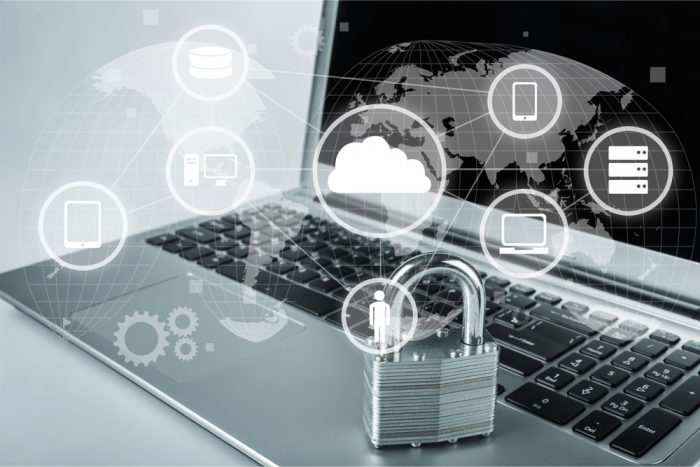Cybersecurity attacks are a severe threat to many different types of businesses. Only 52% of small companies have plans in place to combat cyberattacks, according to a 2018 report by Hiscox. That same report mentions that small businesses face an average annual cost of $34,604 as the result of cyber-related incidents.
If you own a business, and it is the target of a cyberattack, then you may need to rebuild your website infrastructure with better security measures. These attacks also make your organization seem less trustworthy. Investors will be reluctant to associate with you, while the customers may end up going with one of your competitors.
Your business should protect itself with cybersecurity solutions by securing your hardware. You should encourage a security-centered culture, back up and encrypt all of your data, and use anti-malware software alongside a robust firewall. You may also invest in cybersecurity insurance.

What is Cybersecurity: Creating a Plan That Makes Sense for Your Company
You’ll need to conceive of and execute a viable cybersecurity plan. It should include both an employee training program and an incident response plan. Moreover, if you develop the software, you need to make sure it is reliable and secure. For that, you need to care about best practices in secure development, implement security testing and measures into your product DevOps cycle.
But what about network security, we gathered for you the most powerful tips to be sure your company data stays secure. Now, let’s go through a more detailed cybersecurity checklist for your business.
Employee Cybersecurity Training
Cybersecurity courses for your workers should be required. Schedule yearly or semi-yearly refresher courses to keep this subject on their minds. Help them understand the importance of updating software, adopting security best practices, and knowing what to do if they notice a possible breach.
A Quick Response Time is Key
Many cybersecurity trends emphasize response speed above all else. The faster your company can act in the face of a cyberattack, the better you’ll be able to mitigate the damage. An incident response plan helps you do that. It should be made up of the following:
- Whom is to be contacted
- Where data and data backups should be stored
- When to reach out to law enforcement or the public about a breach
The Federal Communications Commission offers a cybersecurity awareness planner to help small-business owners with strategy creation.
IP Addresses
One of the most vital elements of a scalable business network is that it be designed for growth. Companies face problems tracking what IP addresses are assigned to which devices if they don’t proactively create a management plan.
With IP address management solutions, there is a centralized place where networks and IP addresses are maintained. This would be considered an essential cybersecurity framework.
Switches and Routers
Switches and routers are necessary parts of a business network. A switch is something that connects different devices that are on the same network.
There are different types of switches available. For small business networks, unmanaged switches are usually the way to go. They’re simple to install. A managed switch provides more control, but if you’re a small business without a dedicated IT team, you may not be capable of maintaining one.
When selecting a router for small business use, it should have built-in firewalls. It’s more expensive to find, but well worth it.
Backing Up Your Data
Think about how much you rely on your business-critical data. Customer details, orders, quotes, and payment details are all in this category. Now imagine how long you could operate without them.
All businesses should make regular backups of their relevant data and make sure that these backups can be restored if needed. By doing this, you’re ensuring your company can still function following the impact of flood, fire, physical damage, or theft. Also, if you have backups of your data that you can recover quickly, you can’t be blackmailed by ransomware attacks.
When it comes to backing up your data, be sure to do the following:
- Identify what data must be backed up
- Keep your backup separate from your computers
- Consider utilizing a cloud-based backup system
- Have your employees read up on cloud security guidance
- backups part of your daily or weekly routine
Protecting Your Organization from Malware
Malicious software, or malware, is software or web content that can harm your business. The recent WannaCry outbreak is an example. This is one of those cybersecurity threats that has been around in various forms for years. The most well-known form of malware is viruses, which are self-copying programs that infect software.
You can protect your organization from malware in a couple of different ways. First, you can install and activate antivirus software and a firewall. A firewall is one of the cybersecurity tools that acts like a digital shield, preventing malicious software or traffic from getting to your network. There are lots of types of firewalls, but they fall into two basic categories: hardware or software.
Some firewalls also have virus-scanning capabilities. If yours doesn’t, be sure also to install antivirus software that scans your computer to identify and remove any malware that has gotten through your firewall. It can help to control a data breach more efficiently by alerting you to any issues.
You should also prevent your staff from downloading any apps with poor reputations. Keep all your IT equipment and applications up to date through patching. Control how memory cards and USB drives are used, and make sure that your firewall is active at all times. Any cybersecurity programs should incorporate each of these elements.

Be Smart About Passwords
According to the Digital Identity Guidelines, NIST recommends passwords be at least eight characters long and stresses that length is more beneficial than complexity. Tell your employees to create long, unique passwords that can be remembered easily.
If you deal in highly sensitive data, you might choose to implement multifactor authentication. This security measure requires users to present at least two identifying factors, like a code and a password, before gaining access to systems or programs.
Also, make sure you switch on password protection. Use two-factor authentication for more important accounts. Avoid using predictable passwords, and help your staff cope with password overload by simplifying your system as much as possible. Make sure you’ve changed all company default passwords as well.
Avoiding Phishing Attacks
In a phishing attack, scammers send fraudulent emails to thousands of people looking for sensitive information such as bank account details or containing links to harmful websites. Phishing emails are getting more difficult to spot, and some will still get past even the most observant users.
Whatever your business, you will receive phishing attacks at some point. To combat them, configure accounts to reduce the impact of successful offensives. Think about how you operate and check for the most visible signs of phishing. Report all attacks to the proper authorities, and keep up to date with the most well-known attackers.
Increase Email Security
Nearly half of all the malicious email attachments come from office files, per Symantec’s 2019 Internet Security Threat Report.
Basic email safety precautions, such as not opening suspicious links or attachments, should be covered in your employee training plan. If you deal with personal client data, you can also encrypt documents, so both the recipient and the sender need a passcode to open it.
Secure Your Wi-Fi Network
Wi-Fi equipment isn’t secure when you first buy it. Your device will come with a default password, but be sure your network is encrypted with a different, unique one.
Your router will probably allow you to choose from multiple kinds of passwords. One of the more secure is a Wi-Fi Protected Access II (WPA2) code. You’ll also want to hide your network so that the router does not broadcast the network name.
Protect Payment Processors
It’s necessary to work with your bank or payment processor to ensure that you’ve installed all relevant software updates. The more complex the payment system, the more challenging it will be to secure. The Payment Card Industry Security Standards Council has a guide so you can identify the system you use and learn to protect it.
Stick to Secure File Transfers
An organization that processes sensitive data such as email addresses and credit card numbers should use a secure file transfer system. Such a system will encrypt confidential information, making sure that no unauthorized users can access it.
Many organizations use email like a file-transfer service. This isn’t ideal, as it leaves your files open to cybertheft. File transfer protocols (FTP) are also unencrypted, leaving them vulnerable to potential outside access.
There are several ways to avoid these threats, including Secure File Transfer Protocol and email encryption, but the most popular is by using a managed file transfer service.
Why is cybersecurity important? Now, you should have some understanding of the answer to that question. AI, cybersecurity, and basic safeguards for your network should all be topics about which your employees know. Make sure to train all of your workers in these areas and keep them up to date with the cybersecurity plan that you choose to implement.
Find a Home-Based Business to Start-Up >>> Hundreds of Business Listings.














































